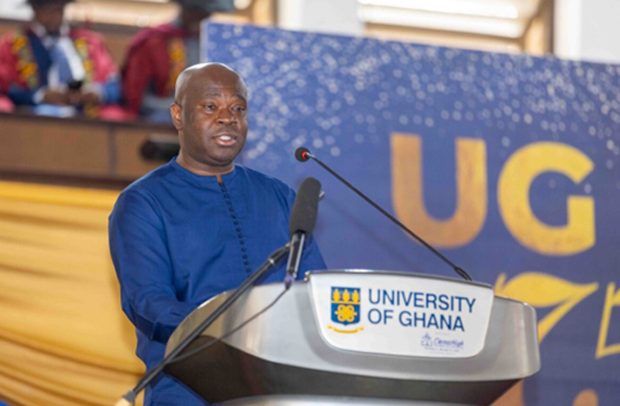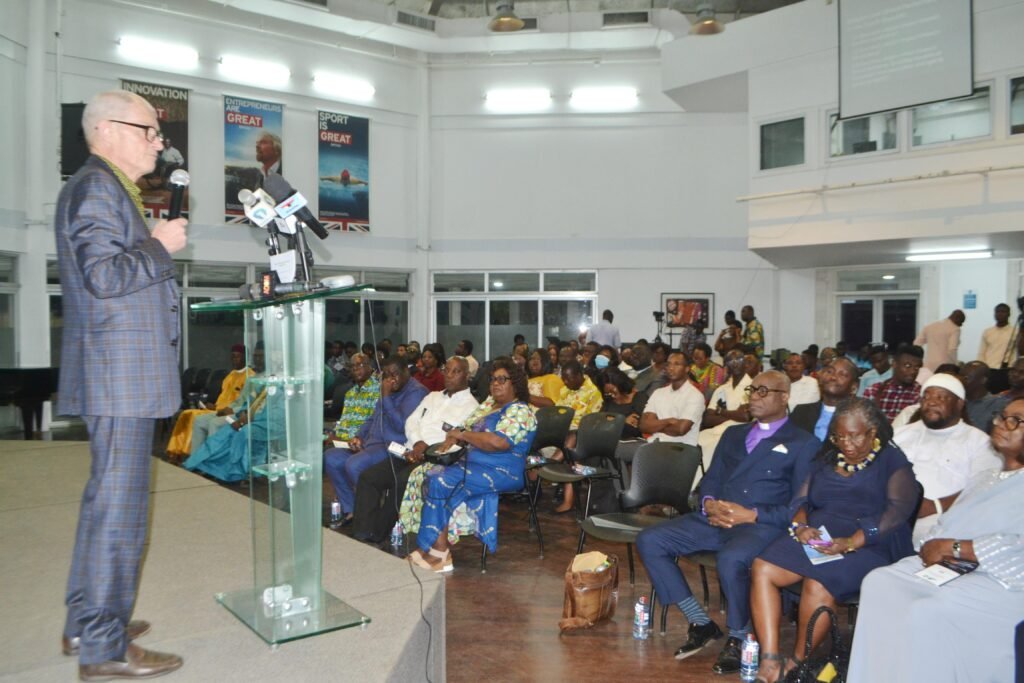
By Juliet ETEFE, New Dehli ([email protected])
Travelling can be transformative, especially when it reveals insights into one’s own homeland. In just seven days, I found India to be a fascinating study in deliberate progress and cultural pride—a journey that reshaped my perspective on what Ghana could also achieve.
India, one will say is a land of contrasts and harmony, where centuries-old traditions coexist with groundbreaking technological advancements.
Last month, I had the privilege of joining four fellow journalists from Ghana on the 2024 Journalist Familiarisation Programme – organised under the auspices of the External Affairs Ministry of India – exploring India alongside other 30 media professionals from about 10 countries from Central and Western Africa.

For seven days, we journeyed through vibrant cities and quiet communities, witnessing how India has nurtured its potential to build one of the world’s most dynamic economies.
Through visits to bustling markets, historical sites, cutting-edge facilities and institutions brimming with innovation, I discovered the facets of a country committed to growth and resilience, despite a population exceeding 1.6 billion.
This trip was not just about uncovering the marvels of India; it was about realising how much Ghana, with its wealth of resources and growing ambition, stands to gain by embracing some of these intentional strategies.
Here’s a day-by-day recount of our travels and discoveries, interwoven with reflections on what Ghana could adopt to achieve similar leaps in development.

Vibrant introduction to craft and culture – Delhi Haat INA
Our first stop at Delhi Haat INA—a vibrant open-air market—was like stepping into the heartbeat of India’s culture. This artisan hub offers handicrafts from across the country: intricate sandalwood carvings, brassware and exquisite textiles. The market is more than a place of commerce; it’s a cultural stage that connects artisans directly with urban buyers, promoting both cultural pride and economic empowerment.

Walking through this vibrant market, I was struck by the emphasis India places on preserving and promoting indigenous craftsmanship. Artisans are given an elevated platform to reach customers, enhancing their livelihood and preserving their traditions.
Ghana, with its rich heritage of Kente weaving, beads, wood carvings and others, could benefit from a similar model. Creating a space where local artisans can showcase their work to a wider audience would not only support livelihoods, but also amplify our cultural identity on the global stage.
The National Museum, a lesson in preservation
Our second day led us to New Delhi’s National Museum, bringing us face-to-face with over 5,000 years of history.

Also known as the National Museum of India and being one of the largest museums in India, it is dedicated to preserving India’s vast history through a staggering collection of over 200,000 works of art. Established in 1949, the blueprint of the National Museum had been prepared by the Gwyer Committee set up by the Government of India in 1946.
It also houses the National Museum Institute of History of Art, Conservation and Museology on the first floor which was established in 1983 and has been a university since 1989, running master’s and doctoral level courses in art history, conservation and level museology.
Here, history isn’t just archived; it’s celebrated. The museum’s mission to educate and inspire younger generations with stories from India’s past was clear, as we saw school groups touring the museum, guided by educators committed to passing on the nation’s rich heritage to the next generation. We were told it was compulsory for the student to come there and learn.
In Ghana, we have invaluable historical assets; hence, preserving and presenting our history with the same intent is an area that could see more investment. By prioritising historical education, we can foster national pride and ensure that Ghana’s story is told through its own lens.
Building resilience – Coalition for disaster resilient infrastructure
Subsequently, we visited the Coalition for Disaster Resilient Infrastructure (CDRI) where Ramraj Narasimhan, the Senior Director, stressed a “whole-of-society” approach to building resilience against natural disasters.

The Coalition for Disaster Resilient Infrastructure (CDRI) is a partnership of national governments, United Nations agencies and programmes, multilateral development banks and financing mechanisms, the private sector, and knowledge institutions that aims to promote the resilience of new and existing infrastructure systems to climate and disaster risks in support of sustainable development.
For a nation with India’s size and diversity, resilience isn’t merely a government responsibility; it’s everyone’s duty.

For Ghana – prone to floods and other climate challenges, this approach is relevant. A “whole-of-society” commitment, where both government and citizens actively participate in resilience-building, could significantly mitigate disaster impacts.
CDRI’s model demonstrates that resilience is a shared goal built by empowering communities and promoting sustainable practices. Ghana, too, can champion this collective resilience as part of its journey toward sustainable development.
Press Trust of India
That afternoon, we visited Press Trust of India (PTI), India’s national news agency. Here, the power of independent media was palpable. Registered in 1947 and started functioning in 1949, it currently employs more than 700 journalists and 3000 stringers to cover almost every city and small town in India. The agency takes pride in providing unbiased news, reinforcing the importance of a free press in democracy.
As Ghana’s media sector grows, strengthening our press networks could build public trust, counter misinformation and reinforce democratic values.

India-Africa strategic partnerships
We rounded up the day with a meeting with Shri P. Kumaran, Special Secretary – Economic Relations and Development Partnership Administration (ER&DPA) at the Ministry of External Affairs, India, who underscored India’s commitment to Africa, with trade and investment already reaching nearly US$100billion.

In Ghana, India’s influence is evident across sectors – from pharmaceuticals to agriculture; and opportunities for collaboration are promising. By forming joint initiatives and fostering stronger trade relations, Ghana could enhance its trade infrastructure and open doors for local businesses to grow.
The drive for rural empowerment – SARAS Ajeevika Mela
On day-three, we travelled to the SARAS Ajeevika Mela in Gurugram, organised by the Ministry of Rural Development and the National Institute of Rural Development and Panchayati Raj.

This fair brings together rural women artisans from across India, showcasing their crafts and providing them with a platform to connect with buyers.

The energy at the fair was vibrant and inspiring, underscoring the impact of giving rural entrepreneurs access to larger markets.

For Ghana’s many rural entrepreneurs, particularly women, a similar annual fair could be a transformative initiative, bridging the gap between rural and urban markets. By offering platforms that connect rural craftsmanship with demand, we can unlock economic potential in our rural communities.
The White Revolution – Amul Dairy Plant
On Day-4, we witnessed the extraordinary success of Amul – a cooperative dairy brand that transformed India’s dairy industry. Owned by the cooperative society, Gujarat Cooperative Milk Marketing Federation (GCMMF), based in Anand Gujarat, Amul empowered small dairy farmers to benefit from a shared economy of scale.

The cooperative model of Amul, known as the “White Revolution”, transformed India from a milk-deficient nation to the world’s largest milk producer, with over 3.6 million farmers benefitting from fair prices and support services.
It was a revelation to see the impact of cooperative structures on rural prosperity and food security.

The dairy developed a plant of milk powder and lately entered into milk-chocolate market besides butter ghee, cheese, and baby food.
Amul contributed to the scientific education of animal husbandry and increased production of milk. It also established veterinary hospitals, artificial insemination centres for animals and hybrid-cow breeding centres at village Ode.

Ghana, with its agricultural strengths, has the potential to replicate such a model in sectors like cocoa, cashew, poultry and so on. A cooperative approach could empower Ghanaian farmers, boost productivity and enhance national food security. Emulating Amul’s cooperative model could enhance key sectors, enabling farmers to capture greater value from their produce and strengthening the nation’s food security.
The majestic Statue of Unity
We made a final stop at the famous Statue of Unity – the world’s tallest statue, with a height of 182 metres (597 feet), located near Kevadia in the state of Gujarat, India.

It depicts Indian statesman and independence activist Vallabhbhai Patel (1875-1950), who was the first deputy prime minister and home minister of independent India and an adherent of Mahatma Gandhi. Patel is highly respected for playing a significant role in the political integration of India.
“After the independence of our country, he played a very important role in unifying all 562 princely states of the country to build the Republic of India. So, the statue is named as the Statue of Unity”, Rahul Patel, a tour guide told the journalists.

The statue is located in Gujarat on the Narmada River in the Kevadiya colony, facing the Sardar Sarovar Dam –100 kilometres (62 mi) southeast of the city of Vadodara.
The project was first announced in 2010, and construction started in October 2013 by Indian company Larsen & Toubro, with a total construction cost of US$422 million.
It was designed by Indian sculptor Ram V. Sutar and was inaugurated by Prime Minister Narendra Modi on 31st October, 2018 – the 143rd anniversary of Patel’s birth.

The statue has become a major tourist attraction, bringing millions of visitors to the region and revitalising the local economy.
Beyond its impressive architecture, the statue serves as a reminder of the enduring impact of national pride and the importance of celebrating figures who embody national unity.

Ghana has public monuments dedicated to our own champions of unity, such as Dr. Kwame Nkrumah and others, to foster collective pride and inspire future generations. Celebrating our history through such monuments is a powerful symbol of Ghana’s own journey toward unity and progress.
With the kind of intentional investment being made by the India Government to expand facilities and create more interesting side attraction zones around the Statue of Unity, more people are likely to be attracted to the tourist site; and that will also mean more revenue for the government.
Ghana could benefit from heritage-driven tourism initiatives by creating business opportunities around museums or monuments, which would offer jobs and stimulate local economic growth.
National Institute of Design – designing for the future
Our next visit, marking day-5, took us to the National Institute of Design (NID) – one of the foremost design schools in Asia.

The National Institute of Design (NID) is a public design university in Paldi, Ahmedabad, with extension campuses in Gandhinagar and Bengaluru. Regarded as one of the foremost design schools in Asia as surveyed by Bloomberg Business week in 2009 and on Ranker, it is ranked 51-100 among the top art and design institutes in the world as of 2022 by QS.
The university, along with the other NIDs across India, functions as an autonomous institute under the Department for Promotion of Industry and Internal Trade, Ministry of Commerce and Industry, Government of India. NID has been accorded an Institute of National Importance under the National Institute of Design Act, 2014.
For Ghana, nurturing design talents could play a vital role in diversifying our economy. A national design institute with an emphasis on innovation could be instrumental in developing industries like fashion, technology and product design, fuelling Ghana’s aspirations to become a creative hub within Africa.
 Read Full Story
Read Full Story












Facebook
Twitter
Pinterest
Instagram
Google+
YouTube
LinkedIn
RSS